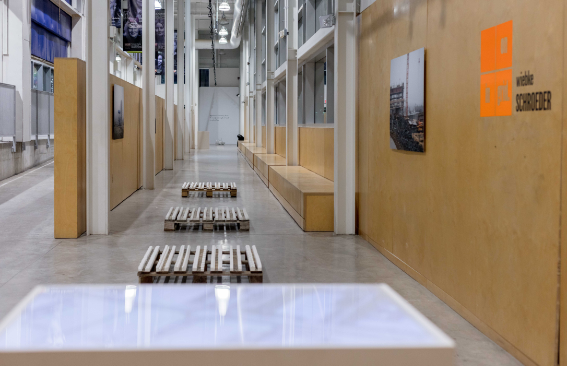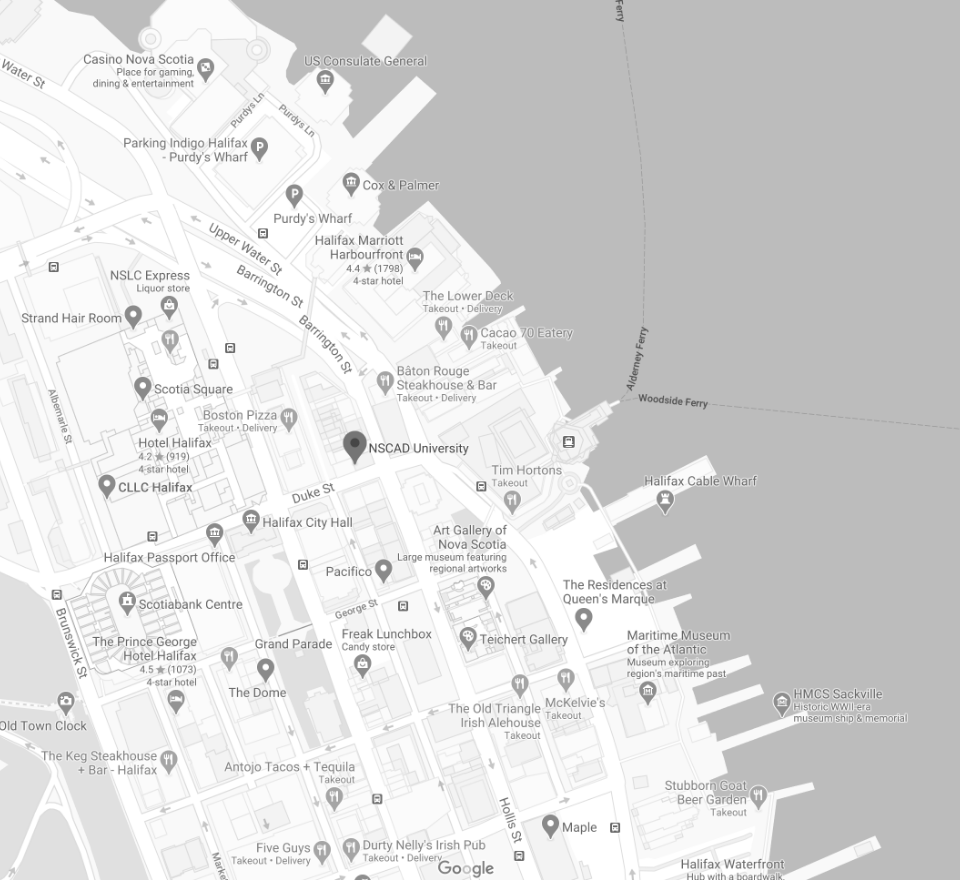Who We Are
If you believe that creative ideas can build a better world, there’s a place for you here.
Students at NSCAD University have been shaping art, design and craft in Canada since 1887. With an approach to education that includes the strategic integration of arts, culture and community engagement, students thrive in a learning and research environment that is committed to equity, diversity, inclusion and academic excellence.
Inspiring generations of makers for over a century, NSCAD University is one of Canada’s oldest independent cultural institutions. Today, it continues to be regarded as a principal centre for education and research in visual culture in North America.
Mission and Vision
mission and vision
To nurture transformative experiences that challenge conventional thinking through art, craft, design and media. Creative ideas in practice can respond to global challenges and build a better world.
Visiting Artist Ghorbel + Mhiri
To ignite and spread creative innovation across the world.
Laura Jean Forrester (BFA 2015)
1
NSCAD University is a beloved educational community, recognized for its leadership and innovation in creative practice, research and pedagogy.
2
NSCAD is committed to encouraging diverse perspectives, as it is through diversity that creativity and innovation can flourish.
3
NSCAD works with students to prepare them for the creative industries, where they become leaders, entrepreneurs and experts within their field.
history
history
NSCAD University boasts a long list of impressive school principals and presidents, including Arthur Lismer, a member of the influential Group of Seven. During his 1916 to 1919 tenure, his artist friends from Toronto travelled east to offer lectures and demonstrations, and the school hosted exhibitions featuring the best in contemporary Canadian and British art. In 1925, under the direction of the school‘s first female principal, Elizabeth Styring Nutt, it was renamed the Nova Scotia College of Art and incorporated by the Provincial charter.
Modernization
Garry Neill Kennedy joined NSCAD in 1967 and soon set about modernizing the small art school into an educational hotbed of activity in the latest modes of art creation. To recognize the importance of design studies in 1969, the school was renamed the Nova Scotia College of Art and Design (NSCAD). Also at this time, the college gained degree-granting status.
NSCAD soon developed an international reputation–Andy Warhol received an honorary degree in 1972 and a year later, the influential magazine Art in America mused NSCAD might be “the best art school in North America.”
Kennedy was attracting cutting-edge art stars from across Europe and North America to lecture, teach and collaborate with students and faculty at the college. To name a few: Joseph Beuys, Eric Fischl, Vito Acconci, Sol LeWitt, Michael Snow, Joyce Wieland, Hans Haacke, Claes Oldenburg, A.R. Penck, Krzysztof Wodiczko and John Baldessari.
Expansion and Growth in the New Century
Paul Greenhalgh joined NSCAD as its president in 2001 from London’s Victoria and Albert Museum. He headed a period of unprecedented physical plant expansion beginning with the purchase in 2002 of the block of heritage buildings NSCAD had leased since 1978, establishing the university’s first permanent home in downtown Halifax.
In 2002, NSCAD acquired another historic gem–the Academy Building, adjacent to the Halifax Citadel fortress and a short walk from the main campus.
In 2006, construction of the third campus commenced on property owned by the Halifax Port Authority at Halifax’s seawall.
THE PRESS
Many of these avant-garde artists left a lasting impression through works published by the NSCAD Press and prints produced through the Lithography Workshop. Many of these prints are now in important public and private collections, such as London’s Victoria and Albert Museum, and were exhibited at the Art Gallery of Ontario, the National Gallery and New York’s Museum of Modern Art.

John Baldessari, I Will Not Make Any More Boring Art, 1971, Lithograph on paper (57.0 x 76.2 cm). Anna Leonowens Gallery Archives: Lithography Workshop Collection
NSCAD TODAY
From artists and craftspersons, to entrepreneurs and small business owners, to designers of modern health and environmental products, NSCAD University alumni are among Canada’s most highly-regarded creative professionals. NSCAD’s vision statement perfectly reflects NSCAD today: Informed by the past, engaged by the present, looking to the future, and guided by the intention to make positive change, NSCAD University is a beacon to those who seek to know the world as it is and to create what it might be.
Visit and explore
visit and explore
Governance
governance
NSCAD University is a public institution governed in accordance with the University Act of Nova Scotia. It operates with a bicameral governance system, with two senior governance bodies: a duly constituted Board of Governors and a Senate, both of which include representation from faculty, staff, and students.


NSCAD University is a public institution governed in accordance with the University Act of Nova Scotia. It operates with a bicameral governance system, with two senior governance bodies: a duly constituted Board of Governors and a Senate, both of which include representation from faculty, staff, and students.


